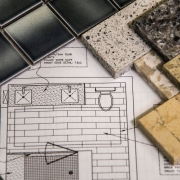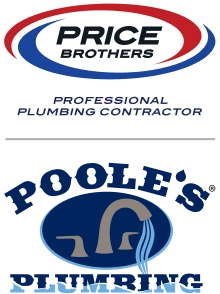Bathroom Remodel
A bathroom remodel isn't just about upgrading fixtures and aesthetics; it's also an opportunity to ensure that everything, including your plumbing, is in optimal condition. From minor updates to full-scale renovations, understanding the plumbing basics can make a significant difference in the success and efficiency of your project. This guide provides a comprehensive look at what you need to know about plumbing for your bathroom remodel, covering everything from planning and budgeting to working with professionals and everyday challenges.
Planning the Remodel: What You Need to Consider
- Existing Plumbing Layout: One of the first things to consider is the placement of your existing plumbing. Changing the layout can add significant expenses, as it may require opening up walls and floors to reroute pipes.
- Water Efficiency Upgrades: Consider switching to water-efficient fixtures as part of your remodel. This can lower your water bill and be more environmentally friendly.
- Future-Proofing: If you plan to live in your home for years, consider adding features that make aging in place easier. This may include barrier-free showers, strategically placed grab bars, and additional lighting.
- Ventilation: A crucial but often overlooked aspect is the bathroom's ventilation, which helps remove excess moisture that can lead to mold and mildew. Ensure your remodel includes a properly working exhaust fan or a window for ventilation.

Working with Professionals
- Plumbing Contractors: It's firmly advisable to consult with a professional plumber, especially if you're considering significant changes to the layout or fixtures. They can assess your home's current plumbing condition and offer options that fit your ideas, visions, and budget.
- Permits: Your plumber can help determine whether your remodel requires permits. They can also assist with obtaining the necessary paperwork, ensuring your project is up to local building codes and regulations.
- Scheduling: Coordinating with your plumber is critical to a successful remodel. Discuss timelines early, as plumbing work is often done in the early stages of renovation before walls are sealed and finishes are completed.
Check out some of the Top architects and designers in the Raleigh area!
Joint Plumbing Projects for a Bathroom Remodel
- Fixture Upgrades: Replacing sinks, toilets, and tubs/shower units is a straightforward way to update your bathroom. While many fixtures can be switched with minimal impact on the plumbing, ensuring the existing plumbing configurations support the new fixtures is essential.
- Pipe Replacement: Older homes may have outdated pipes that need replacing. Common considerations include material (e.g., copper vs. PEX) and upgrading to larger pipes to improve water flow and system efficiency.
- Adding Bathroom Features: New features like a whirlpool tub or a steam shower may require additional plumbing installation. Detailed planning is essential to incorporate these features seamlessly.
- Water Heater Upgrade: Increasing the size or type of water heater (e.g., from tanked to tankless) can support your bathroom's increased demand for hot water, especially if you're adding an enormous bathtub or high-flow shower system.
Dealing with Common Plumbing Challenges of a Bathroom Remodel
- Hidden Leaks: Walls opened up during a remodel may reveal hidden leaks in the plumbing. So, addressing these issues early on is essential to preventing more significant problems.
- Drainage Issues: If you're experiencing slow drainage or backups, now is the best time to address these issues. Your contractor or plumber may inspect pipes using a camera to identify and correct drainage problems.
- Low Water Pressure: Consider adding a booster pump or increasing pipe size to improve water pressure, mainly if you're adding high-flow fixtures that may tax your existing plumbing system.
Budgeting for Plumbing Costs
Bathroom remodel plumbing costs vary widely based on the project's scope, the age and configuration of your home, and the specific plumbing fixtures and materials you choose. A good rule of thumb is to allocate 15-20% of your bathroom remodel budget to plumbing work. This can cover everything from labor and materials to unforeseen expenses.
Conclusion
A successful bathroom remodel requires thoughtful planning, expert advice, and a commitment to quality. By taking your plumbing considerations seriously, you can ensure the final product is beautiful but also functional and efficient. Whether updating a few fixtures or embarking on a complete overhaul, understanding the plumbing ins and outs will make your project successful.
Contact Pooles Plumbing for all your needs.






